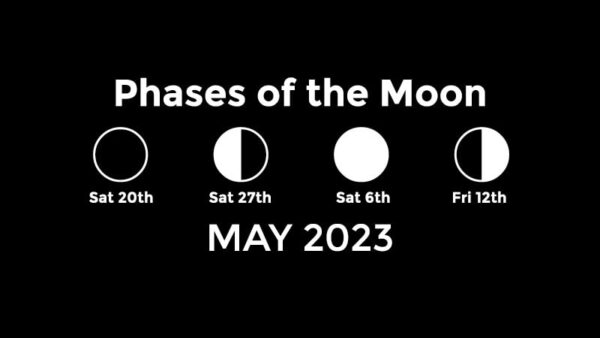Find out what to go out and look at this month
Planets:
Throughout the month of May, Venus and Mars continue to remain as the evening planets. Venus can be seen in the northwest, moving from the constellation of Taurus (The Bull) to join Mars in the constellation of Gemini (The Twins) at the end of the first week of the month. Mars, in turn, will then move from the constellation of Gemini to the constellation of Cancer (The Crab) in the middle of the month.
Mercury, on the other hand, can be spotted low in the east in the early morning, below Jupiter, in the constellation of Aries (The Ram), during the middle of the second week of the month. Mercury will reach its greatest elongation in the West on Monday the 29th of May before making its way back towards the Sun. Jupiter, on the other hand, is low in the east in Pisces (The Fish) but will be moving to join Mercury in Aries towards the end of the third week of the month.
Saturn can be seen rising around midnight in the northeast in Aquarius (The Water-Bearer), providing a mesmerizing view for the stargazers. Uranus, which had disappeared early in April, will reappear in the early morning in the constellations of Taurus by the end of the month.
Lastly, Neptune can be found in the early morning sky in between the constellations of Pisces and Cetus, offering a unique view of the night sky.
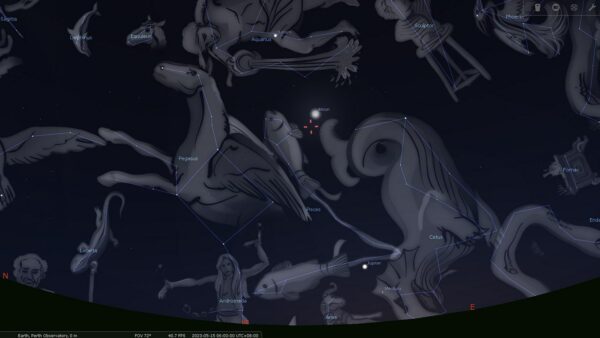
|
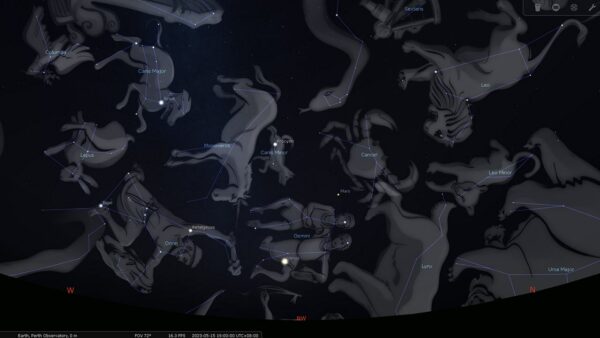
|
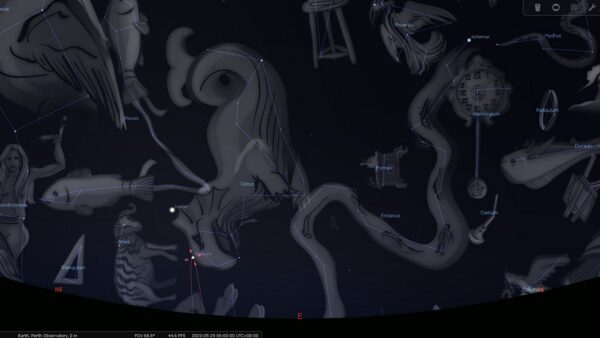
|
| Planet | When It Rises Or Sets |
|---|---|
| Mercury | At the start of May, it’s in the Sun’s glare, and by the end of the month, it’ll rise at sets at 05:05 am (AWST) |
| Venus | At the start of May, it sets at 08:01 pm (AWST), and by the end of the month, it’ll set at 08:29 pm (AWST) |
| Mars | At the start of May, it sets at 10:02 pm (AWST), and by the end of the month, it’ll set at 09:26 pm (AWST) |
| Jupiter | At the start of May, it rises at 05:40 am (AWST), and by the end of the month, it’ll rise at 04:14 am (AWST) |
| Saturn | At the start of May, it rises at 01:42 am (AWST), and by the end of the month, it’ll rise at 11:51 pm (AWST) |
| Uranus | At the start of May, it’s in the Sun’s glare, and by the end of the month, it’ll rise at 05:36 am (AWST) |
| Neptune | At the start of May, it rises at 03:22 am (AWST), and by the end of the month, it’ll rise at 01:28 am (AWST) |
Alignments, Conjunctions And Occultations:
Conjunctions are a phenomenon that involves objects within our Solar System, as well as more distant objects such as stars. From the observer’s perspective, it appears as though multiple objects that aren’t close together, in reality, appear close in the sky.
On the other hand, an occultation is an event that occurs when one celestial body passes across the line of sight between an observer and another celestial body. One example of an occultation is a solar eclipse, which occurs when the Moon passes in front of the Sun from the perspective of the observer.
- 04/05/23 – Conjunction of The Moon and Spica (Where to look)
- 07/05/23 – Conjunction of The Moon and Antares (Where to look)
- 14/05/23 – Conjunction of The Moon and Saturn (Where to look)
- 18/05/23 – Conjunction of The Moon, Mercury, and Jupiter (Where to look)
- 23/05/23 – Conjunction of The Moon, Venus, Castor and Pollux (Where to look)
- 24/05/23 – Conjunction of The Moon, Venus, Mars, Castor and Pollux (Where to look)
- 27/05/23 – Conjunction of The Moon and Regulus (Where to look)
- 31/05/23 – Conjunction of The Moon and Spica (Where to look)
Astronomical Events This Month:
The Eta Aquarids Meteor Shower:
The Eta Aquarids meteor shower will reach its peak on the night of May 6th/7th, providing skywatchers with a chance to witness one of nature’s most impressive displays. This meteor shower is active from April 19th to May 28th and is caused by the famous Comet Halley. The Eta Aquarids are one of two meteor showers caused by this comet, with the other being the October Orionids. Halley takes 75 years to orbit around the Sun, and it will enter the inner solar system again in 2061.
The meteors will seem to originate from the Aquarius constellation, giving the meteor shower its name. If you’re located in the Perth hills, Aquarius will appear in the sky at around 11:30 pm, and the best time to watch the meteor shower is around 4:00 am (AWST). Be sure to give your eyes at least 15 minutes to fully adjust to the lighting conditions and look between the North and Northeast for the best view. While it’s ideal to find a nice park or large open space for optimal viewing, you can still get a good view from your front or back yard.
However, this year the Full Moon will be in the sky throughout the night, creating a lot of light pollution that may limit the number of meteors visible to a few per hour.
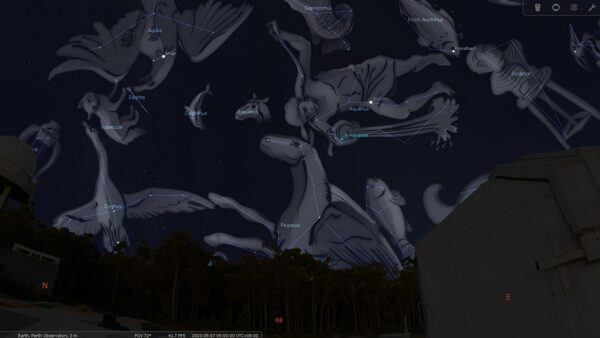
|
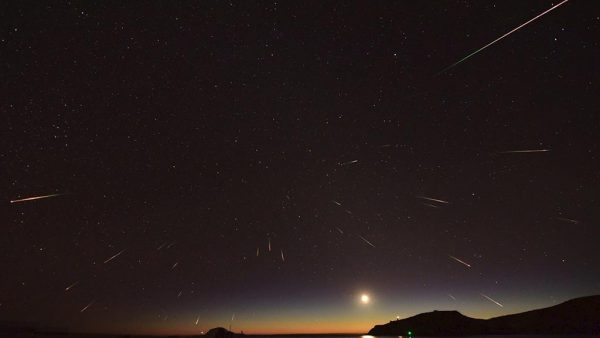
|
Penumbral Lunar Eclipse:
On May 6th, 2023, a penumbral lunar eclipse will occur just over two weeks after the total solar eclipse that occurred over Exmouth in Western Australia. This type of lunar eclipse occurs when the Moon passes through the Earth’s outer shadow, known as the “penumbra” (From the Latin paene ‘almost, nearly’). During this event, the Moon will appear slightly darker than usual, as it will only be partially covered by the penumbra.
This penumbral lunar eclipse will be visible from most parts of the world, including North and South America, Europe, Africa, Asia, Australia, and New Zealand. A penumbral lunar eclipse is not as spectacular as a partial or a total lunar eclipse, but it still offers a unique opportunity to witness a rare astronomical event. Skywatchers will be able to see the subtle changes in the Moon’s brightness and colour as it passes through the penumbra. However, these changes will be quite subtle and may be difficult to discern without careful observation.
To observe the penumbral lunar eclipse, no special equipment is required. The eclipse will be visible to the naked eye from most locations, weather permitting. It is best to find a location with an unobstructed view of the Moon, away from any bright city lights that may interfere with visibility. With a little patience and a clear sky, skywatchers will be able to witness the beauty of the universe in action.
| Event | UTC Time | Time in Perth* |
|---|---|---|
| Penumbral Eclipse begins | 5th of May at 15:14:11 pm | 5th of May at 11:14:11 pm |
| Maximum Eclipse | 5th of May at 17:22:59 pm | 6th of May at 01:22:59 am |
| Penumbral Eclipse ends | 5th of May at 19:31:45 pm | 6th of May at 03:31:45 am |
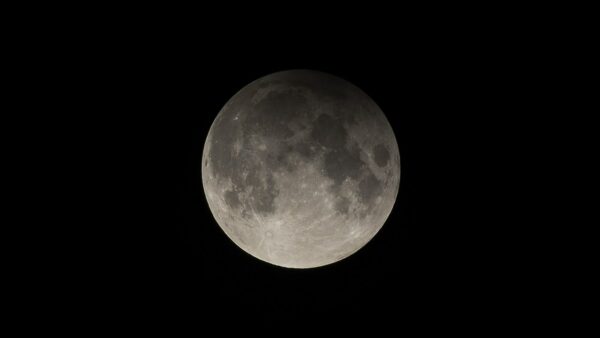
|
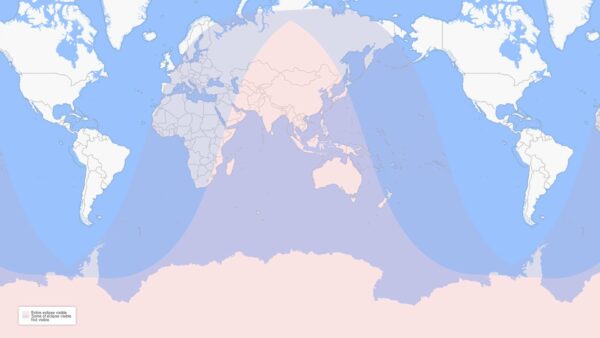
|
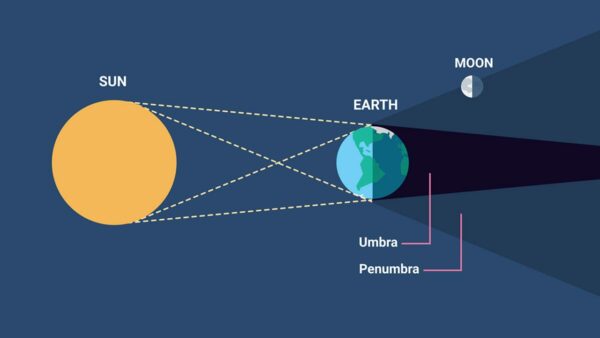
|
Things To Look At This Month:
Sombrero Galaxy:
The Sombrero Galaxy, also known as Messier 104 and NGC 4594, is a fascinating spiral galaxy located in the southern constellation of Virgo. It is a stunning and easily recognizable object, with its distinctive shape resembling that of a wide-brimmed hat or sombrero. The Sombrero Galaxy is about 28 million light-years away from Earth and has a diameter of approximately 50,000 light-years. The galaxy is a prime example of a galaxy with a prominent central bulge and a flattened disk of stars and gas. The disk is surrounded by a thick band of dust, which gives the galaxy its distinctive appearance. The galaxy’s central bulge is thought to be made up of old stars, while the disk contains a mix of both young and old stars.
One of the most remarkable features of the Sombrero Galaxy is the large, dark band of dust that obscures much of the galaxy’s centre. This dust band is thought to be the result of a collision with a smaller galaxy, which disrupted the disk and caused the material to accumulate in the centre. The band is also a site of active star formation, with bright, young stars illuminating the surrounding gas and dust. In addition to its striking appearance, the Sombrero Galaxy has also played an important role in our understanding of the universe. In 2001, astronomers discovered a supermassive black hole at the centre of the galaxy, with a mass estimated to be several billion times that of the Sun. This discovery provided important data on the relationship between galaxies and the supermassive black holes that inhabit their centres.
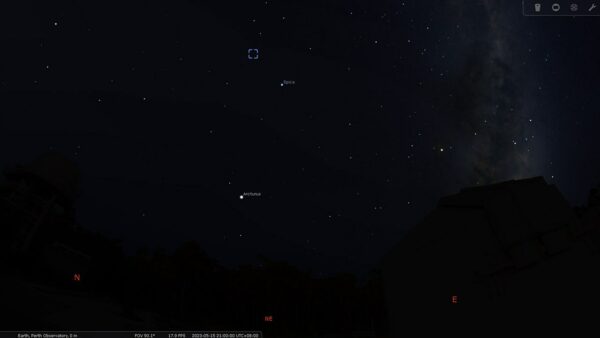
|
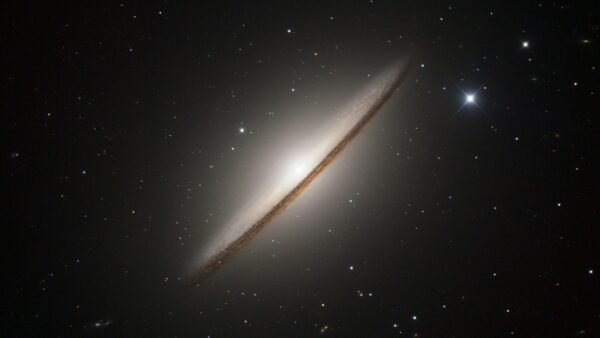
|
Southern Pinwheel Galaxy:
The Southern Pinwheel Galaxy, also known as Messier 83 and NGC 1365, is a barred spiral galaxy located in the southern constellation of Fornax. It is considered one of the most spectacular galaxies visible in the southern hemisphere and is a favourite target for both amateur and professional astronomers. The galaxy is about 60 million light-years away from Earth and has a diameter of approximately 200,000 light-years. The galaxy gets its name from its distinctive shape, which resembles a spinning pinwheel. The central bar of the galaxy is surrounded by a tightly wound spiral arm pattern that gives the galaxy its characteristic appearance. The spiral arms are populated by a multitude of bright, young stars that are actively forming, as well as dense pockets of gas and dust that serve as the raw materials for future star formation.
The Southern Pinwheel Galaxy is also notable for its supermassive black hole at its centre, which has a mass estimated to be several million times that of the Sun. This black hole is thought to be responsible for the intense radiation emanating from the galaxy’s centre, which can be observed in X-rays and other wavelengths of light. In addition to its beauty and scientific importance, the Southern Pinwheel Galaxy has also played a role in our understanding of the universe’s history. In 1987, astronomers observed a supernova in the galaxy, which provided important data on the expansion of the universe and the rate at which it is accelerating.
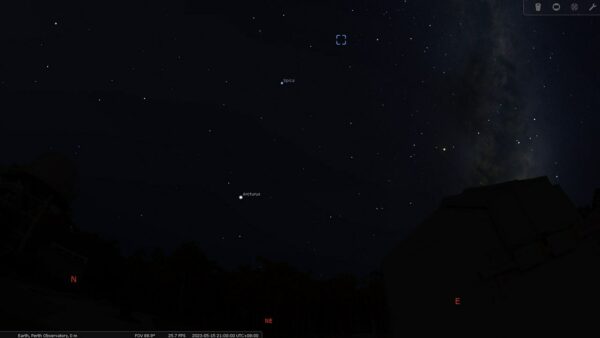
|
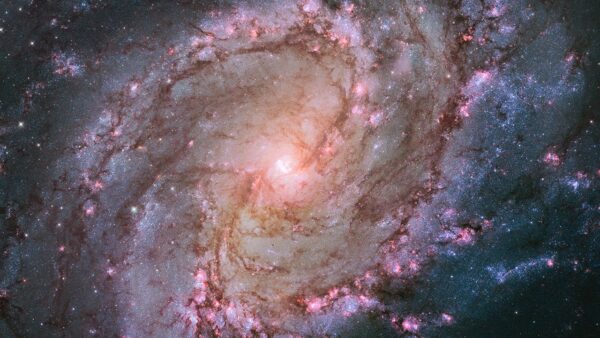
|
Running Chicken Nebula:
The Running Chicken Nebula, also known as IC 2602 or C 96, is an open star cluster located in the southern constellation of Carina. It is one of the closest and most easily visible open clusters to the Southern Cross, a prominent asterism in the southern sky. The Southern Pleiades Cluster is located about 480 light-years away from Earth and is approximately 50 million years old. The cluster is made up of approximately 50 stars, with the brightest member being Theta Carinae, a blue-white giant that is also known as the “Southern Pleiades.” The stars in the cluster are relatively young and are believed to have formed from the same cloud of gas and dust. They are also located relatively close to each other, which makes the Southern Pleiades Cluster an excellent laboratory for studying the interactions between stars.
The Southern Pleiades Cluster is a beautiful object to observe in the night sky, with its bright stars and compact, well-defined structure. It is best viewed from the southern hemisphere, where it is visible in the spring and summer months. Amateur astronomers can easily observe the cluster with a small telescope or binoculars. In addition to its aesthetic appeal, the Southern Pleiades Cluster has also played an important role in astronomical research. Astronomers have used the cluster to study stellar evolution, the formation of stars and planets, and the dynamics of star clusters. Its relative proximity to Earth and the high number of bright stars in the cluster make it an ideal target for these kinds of studies.
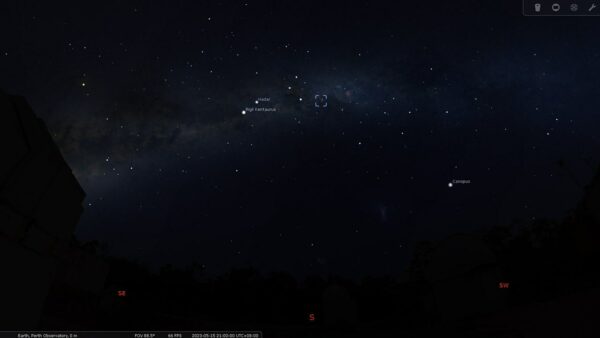
|
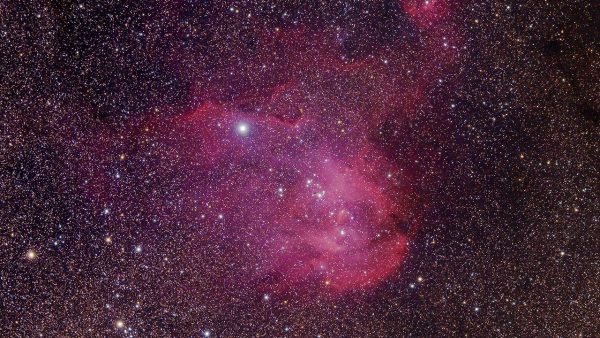
|
Southern Pleiades:
An open cluster, the Southern Pleiades (IC 2602) can be found very close in the constellation Carina and is named after the Pleiades Cluster due to their similarity. This cluster is one of the closest to us at 547 light-years away from Earth, and it contains about 60 stars. The cluster is believed to be 50 million years old and was discovered by French astronomer Abbé Nicolas-Louis de Lacaille in 1751 from South Africa.
They’re the third-brightest open cluster in the sky, following the Hyades and are 70% fainter than the Pleiades Cluster the brightest Cluster. Like its northern counterpart, the Southern Pleiades is best viewed with large binoculars or telescopes with a wide-angle eyepiece.
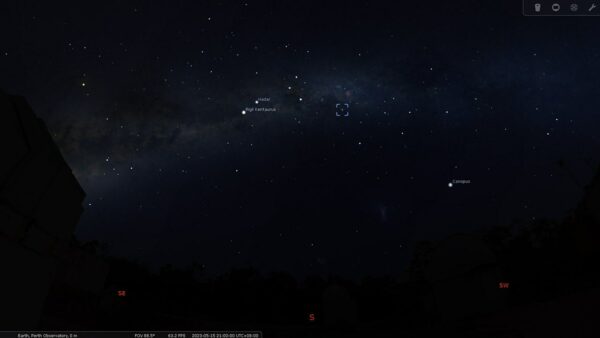
|
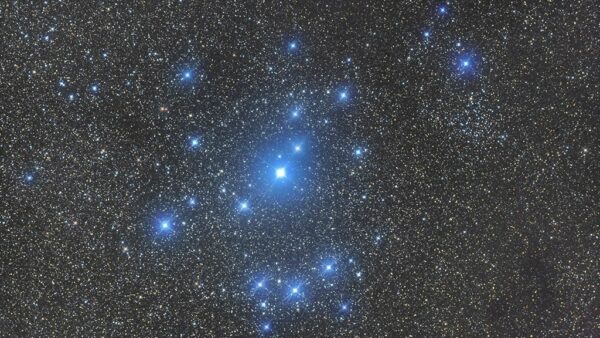
|
Phases Of The Moon:
